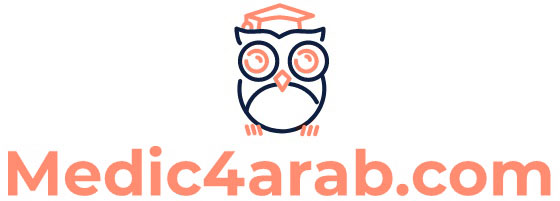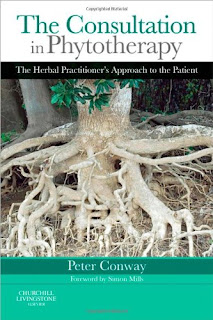- ✅ HOME
- 📚 Health Sciences
- _SEE ALSO
- __Internship الإمتياز
- __USMLE
- __تفريغات طبية Notes
- __Medical APPs
- __Videos
- __MP3
- __MRCOG
- __MRCS
- __PLAB
- __MRCP
- __كتب طبية معربة
- __AMC
- __أسئلة و اختبارات MCQ
- _MEDICINE
- __Anatomy
- __Physiology
- __Histology
- __Biochemistry
- __Pathology
- __Pharmacology
- __Microbiology
- __Bacteriology & Myco.
- __Virology
- __Parasitology
- __Immunology
- __Internal Medicine
- __Dermatology+Andr.
- __Psychiatry
- __Radiology
- __Surgery
- __ENT
- __Ophthalmology
- __Orthopedics
- __Pediatric
- __Gynecology & Obs.
- __Forensic
- __Toxicology
- __Community Medicine
- __specialities
- ___CVS Diseases
- ___Nephrology
- ___GIT Diseases
- ___Obstetrics And Gyne.
- ___General Surgery
- ___Neurosurgery
- ___Pediatric Surgery
- ___Plastic Surgery
- ___Cardiac Surgery
- ___Neonatology
- ___Family Medicine
- ___Community Medicine
- ___Anesthesia & ICU
- ___Dermatology Specialty
- ___Psychiatry Specialty
- ___Psychiatry
- ___Ophthalmology
- ___ENT & H&N Surgery
- ___Oral Maxillofacial S.
- ___Emergency Medicine
- ___Skeletal Imaging
- ___BREAST IMAGING
- ___Neuro-Radio imaging
- ___Orthopedics Specialty
- ___Urology Specialty
- ___Pathology Specialty
- _Dentistry
- __General Anatomy
- __Physiology
- __Histology
- __Biochemistry
- __Pathology
- __Microbiology
- __Bacteriology and Myco.
- __Virology
- __Parasitology
- __Immunology
- __Pharmacology
- __Oral Pathology
- __Oral Histology
- __Operative Dentistry
- __R. Prosthodontics
- __Biomaterials
- __General Medicine
- __General Surgery
- __Anesthesia
- __Oral Radiology
- __Oral Diagnosis -Planning
- __Endodontics
- __Fixed Prosthodontics
- __Periodontics
- __Pediatric dentistry
- __Orthodontics
- __Oral Surgery
- __Oral Medicine
- __Aesthetics
- _Pharmacy
- __Medicinal Plants
- __Organic Chemistry
- __Analytical Chemistry
- __Medical Terminology
- __Physical Pharmacy
- __Accounting and Pharmacy
- __Pharmacognosy
- __Anatomy
- __Physiology
- __Histology
- __Pathology
- __Psychology
- __Phytochemistry
- __Pharmacology
- __Microbiology
- __Bacteriology and Myco.
- __Virology
- __Parasitology
- __Immunology
- __Biochemistry
- __Hospital Pharmacy
- __Phytotherapy
- __Community Pharmacy
- __Clinical Chemistry
- __Pharm. Chemistry
- __Pharmacokinetics
- __Toxicology
- __First Aid
- __Industrial Pharmacy
- __Pharm. Microbiology
- __Clinical Pharmacy
- _Nursing
- __Medical Terminology
- __Microbiology
- __Bacteriology and Myco.
- __Virology
- __Parasitology
- __Immunology
- __Anatomy
- __Physiology
- __Biochemistry
- __Fundamentals-Nursing
- __Nutrition
- __Pathology
- __Med-Surgical Nursing
- __Psychology
- __Pharmacology
- __Psychiatric Nursing
- __Obs and Gyne Nursing
- __Nursing Management
- __Pediatric Nursing
- __Critical Care Nursing
- __Geriatric Nursing
- __Community Health Nursing
- __Nursing Informatics
- _Medical Laboratory
- __Medical Tech Skills
- __Instrumentation
- __Physiology
- __Biochemistry
- __Hematology
- __Immunology
- __Genetics- Molecular Bio.
- __Coagulation-Hemostasis
- __Diagnostic Microbiology
- __Blood Bank
- __Urinalysis and Body Fluids
- _Learning English
- 🔗 REPORT BROKEN LINK
- 🕬 Advertise with Us
Phytotherapy
The Consultation in Phytotherapy considers the means by which the herbal practitioner can seek to appreciate the patient's predicament. Written for both herbal medicine students and practitioners, the book takes a radical approach, challenging readers to reflect on the nature, scope and methods of the consultation in herbal practice. The author asserts that the effective consultation represents a therapeutic act in and of itself, and proposes strategies for maximising and realising this therapeutic potential. The book provides both a complement to, and a critique of, mainstream texts on clinical diagnosis and case management. It contrasts the herbal consultation with that occurring in conventional medicine and offers rationales, arguments and tools aimed at developing an enhanced capacity to achieve profound results in the herbal clinical encounter. About the Author Peter Conway is a practising medical herbalist and has been involved in developing and teaching on several BSc and MSc courses in herbal medicine. He is the President of the College of Practitioners of Phytotherapy and a Director of the European Herbal and Traditional medicine Practitioners Association. Peter helped draft the National Professional Standards for Herbal Medicine and sat on the Department of Health Steering Group on the Statutory Regulation of Acupuncture and Herbal Medicine.
Table of contents :
Cover......Page 1
ISBN: 9780443074929......Page 2
Dedication......Page 3
Copyright page......Page 4
Foreword......Page 6
Acknowledgements......Page 8
Introduction......Page 9
References......Page 13
The Common Origins of Diet and Medicine......Page 14
Matters of Taste......Page 15
Shape-Shifting......Page 18
Food, Medicine and Pharmacology......Page 20
Co-Evolution......Page 22
Wholeness and Complexity......Page 24
The Nature of Life is Change......Page 27
Ethnobotanical Insights......Page 30
In Search of ‘The Herbalist’......Page 31
The Varieties of Phytotherapy......Page 34
Phytotherapy in the UK......Page 36
Integration and Regulation......Page 37
Phytotherapy and Evidence-Based Medicine......Page 40
Moving Beyond Scientism......Page 43
Phytotherapy: A Personal View......Page 46
References......Page 49
The Challenge of the Therapeutic Relationship......Page 52
What is the ‘Therapeutic Relationship’?......Page 54
The Variety of Relationship Models in Healthcare......Page 57
Patient Expectations: Clarification and Challenge......Page 65
New Perspectives on the Placebo Effect......Page 66
Setting the Context in Which a Therapeutic Relationship Can Emerge: The Importance of Practitioner Factors......Page 70
Reflective Practice: Nurturing the ‘Therapeutic Attitude’......Page 77
Evidence-Based Medicine and the Therapeutic Relationship......Page 78
Phenomenology: The Felt Presence of the Body in the Moment......Page 80
The Relevance of the Therapeutic Relationship in Phytotherapy: Weaving the Loose Threads......Page 87
References......Page 88
Aims and structure of the consultation......Page 92
Concerning Aims......Page 93
Interim Thoughts......Page 103
Notions of Health and Illness......Page 104
Engendering Wellbeing......Page 111
Accept the gift of one’s own symptoms......Page 113
Be able to decline a request......Page 114
Shift your perspective......Page 115
Listen to the stories you tell about yourself......Page 116
Cultivate happiness (tend your personal relationships like you would a garden)......Page 117
Cultivate a relationship with nature......Page 118
Listen to your heart......Page 119
Choose love over fear......Page 120
Be a lifelong learner......Page 122
Exercise your senses......Page 123
Be able to surrender......Page 124
Energy follows thought......Page 125
The Setting for the Consultation......Page 126
Outline Format for Follow-Up Consultations......Page 129
The Consultation as Labyrinth......Page 132
Complexity and the Consultation......Page 137
The Consultation Is a Complex Process......Page 138
Working with Complexity in the Consultation......Page 139
Implications of Working with Complexity in the Consultation......Page 140
Acknowledgements......Page 142
References......Page 143
Introduction......Page 146
Expectations and Agendas: Never Assume......Page 147
Weighing the Three Classic Strategies......Page 155
On Convergence and Divergence......Page 157
Distinctive Features of the Phytotherapy Approach......Page 159
On Diagnosis and Assessment......Page 162
Conceiving the Self......Page 171
Generalizing about Individuals......Page 179
On the Nature of Patients (and Practitioners)......Page 185
On the Nature of Conditions......Page 200
Public reception......Page 208
Public expression......Page 209
Moving with the Patient......Page 213
References......Page 214
Case history-taking......Page 218
Taking the History......Page 220
The History of the Case History......Page 222
The ‘Conversation’......Page 225
The Nature of History......Page 227
Clinical Hermeneutics......Page 230
Narrative-Based Medicine......Page 231
On Hearing, Speaking, Moving and Recording......Page 237
Posing Questions and Listening to Replies......Page 240
Ask for more information......Page 242
Summarize......Page 243
Interrupt......Page 245
Use silence......Page 246
Use humour and play......Page 247
Questioning style......Page 248
Proceed from open to closed questioning......Page 249
Simple leads......Page 252
The Consultation Environment......Page 253
Children......Page 255
The Older Patient......Page 261
Using Intuition......Page 264
Assessing the Four Aspects of Being......Page 266
The Six Non-Naturals and the Prioritization of the Individual......Page 269
Opening Questions......Page 274
Opening Answers......Page 276
Follow-Up Consultations......Page 277
Preparation......Page 278
Enactment......Page 279
Change and Recollection......Page 281
The Initial Consultation......Page 282
The Blank Sheet......Page 283
Questioning Prior Conceptions......Page 284
Recognizing Limitations......Page 285
Welcoming......Page 286
Address......Page 288
Date of birth......Page 289
Occupation......Page 290
Relationship status......Page 291
Children......Page 292
Who lives at home?......Page 293
‘How did you hear about me?’......Page 294
Phytotherapy Orientation......Page 295
History of the Presenting Complaint......Page 296
Previous Medical and Life History: Sensitivity to Initial Conditions......Page 297
Allergies, Intolerances or Sensitivities......Page 299
Family History......Page 300
Drug and Treatment History......Page 301
Social History......Page 302
Smoking......Page 303
Alcohol......Page 304
Illicit substances......Page 307
Exercise and relaxation......Page 308
Work......Page 310
Vitality......Page 311
Energetic Assessment......Page 314
Temperament, Personality, Mood and Outlook......Page 317
Diet......Page 319
Dietary intake and pattern of eating......Page 320
General dietary factors......Page 321
Financial limitations......Page 323
Digestive system......Page 324
Integumentary system (skin, hair and nails)......Page 325
Musculoskeletal system......Page 326
Immune system......Page 327
Reproductive system......Page 328
Expectations 2 and Transiting to the Physical Examination......Page 330
References......Page 331
The Nature of Physical Examination......Page 336
Examination Versus Investigation......Page 339
Evidence-Based Physical Examination......Page 343
Aims and Potentials of Physical Examination......Page 346
The Varieties of the Clinical Gaze......Page 347
Touching and Knowing......Page 348
‘Energetic’ Assessment......Page 351
General Advice on Examination Technique......Page 355
Investigation: The Quest for Certainty......Page 356
References......Page 361
Concluding the consultation and providing ongoing care......Page 364
Moving Towards a Conclusion......Page 365
Coherence and Understanding......Page 366
Awareness of placebo and nocebo effects: facilitating the meaning response......Page 368
Talking about prognosis......Page 369
Referral: involving others......Page 370
Low literacy......Page 371
Talking about Herbal Medicines......Page 372
The Practitioner as Leader and Manager......Page 373
Facilitative Leadership......Page 375
Shared Leadership......Page 376
Returning to the Practitioner as Teacher......Page 377
Shared Decision-Making and Co-Planning......Page 381
Regimen: The Treatment Plan......Page 387
Closing the Consultation......Page 388
Final checking......Page 389
Continuity of Care......Page 390
Rapid responses......Page 393
Frequency of visits......Page 394
Reflective Practice and Research......Page 395
References......Page 397
Recommended Reading......Page 400
Burnout......Page 402
Sustaining the Personal Self......Page 403
Taking Our Own Advice......Page 405
References......Page 406
Interprofessional communication......Page 408
References......Page 409
Index......Page 410
You may like these posts
Search This Site
Visitors Counter
TRENDING

جميع كتب التشريح - أناتومي للدكتور سامح دوس (المرجع الذي ينصح به أغلب طلاب الطب) Anatomy books by dr. Sameh doss
جميع كتب التشريح - أناتومي للدكتور سامح دوس ِAnatomy books by…

جميع كتب د. محمد المطري في الجراحة + جراحة عملي Surgery books by dr. mohamed al matary
جميع كتب د. محمد المطري في الجراحة للتحميل Surgery books by dr…

Internal Medicine Books, Dr. Ahmed Mowafy (2020-2021)
Internal Medicine Books, Dr. Ahmed Mowafy (2020-2021) كتب الباطنة لـ د/…

ABC Of Drugs من أفضل كتب الفارما
ABC Of Drugs الكتاب يشرح الدواء بالاسم العلمى والتجارى وكيفية أ…

Internal medicine Books Dr. Mahmoud Allam (2021)
Internal medicine Books Dr. Mahmoud Allam (2021) كل كتب الباطنة لـ د / …

لطلاب الطب البشري : أفضل مرجع تذاكر منه لكل مادة (تجربتي الشخصية)
لطلاب الطب البشري : أفضل مرجع تذاكر منه كل مادة (تجربتي الشخصي…

من أفضل كتب ال Clinical Medicine : كتاب د. محمود سويلم Clinical Medicine book by dr. mahmoud sewilam
من أفضل كتب ال Clinical Medicine كتاب د. محمود سويلم Cli…

تجميعة لكل قنوات الدكاترة المصريين على اليوتيوب - 47 قناة
تجميعة لكل قنوات الدكاترة على اليوتيوب في مختلف المواد واللي زادت …

مرجع ال الرائع للدكتور زكريا عبد الحميد Histology Book by dr. zakarya abd el hamed
مرجع علم الأنسجة Histology الرائع للدكتور زكريا عبد الحميد …

BLS: Qquestion and Answer by (NHCPS)
BLS: Qquestion and Answer by (NHCPS) True or False: The jaw-thrust…

جميع كتب د. محمد المطري في الجراحة + جراحة عملي Surgery books by dr. mohamed al matary
جميع كتب د. محمد المطري في الجراحة للتحميل Surgery books by dr…

تحميل فيديوهات و ملفات Download Boards & Beyond الخاصة بالاستعداد ل USMLE Step 1
Download FREE Videos & PDFs of Board and Beyond USMLE STEP 1 …

جميع كتب التشريح - أناتومي للدكتور سامح دوس (المرجع الذي ينصح به أغلب طلاب الطب) Anatomy books by dr. Sameh doss
جميع كتب التشريح - أناتومي للدكتور سامح دوس ِAnatomy books by…

BLS: Qquestion and Answer by (NHCPS)
BLS: Qquestion and Answer by (NHCPS) True or False: The jaw-thrust…

كتب و تفريغات و مراجعات الباطنة للدكتور محمد الشافعي
كتب و تفريغات و مراجعات الباطنة للدكتور محمد الشافعي Internal …

ACLS: Qquestion and Answer by (NHCPS)
ACLS: Qquestion and Answer by (NHCPS) True or False: Synchroni…

لطلاب الطب البشري : أفضل مرجع تذاكر منه لكل مادة (تجربتي الشخصية)
لطلاب الطب البشري : أفضل مرجع تذاكر منه كل مادة (تجربتي الشخصي…

Internal Medicine Books, Dr. Ahmed Mowafy (2020-2021)
Internal Medicine Books, Dr. Ahmed Mowafy (2020-2021) كتب الباطنة لـ د/…

Internal medicine Books Dr. Mahmoud Allam (2021)
Internal medicine Books Dr. Mahmoud Allam (2021) كل كتب الباطنة لـ د / …

كل ما تريد معرفته عن اختبار ال OET و كيف تستعد له
السلام عليكم بوست طويل مهم للدكاترة اللي ما زالت في بداية طريق ا…
✅ WE HAVE A TOTAL OF:
Books & Articles.
FOLLOW US
☕ Support Our Work
BTC: 16HDZmgAwtoHcL8huAmZaWJQ2UD9MWGk7o
USDT (TRC20): TYJurLBhjtwGLXQps5ftDxdU925vyR7wHC
اللَّهُمَّ صَلِّ وَسَلِّمْ وَبَارِكْ عَلَى سَيِّدِنَا مُحَمَّدٍ
Created By SoraTemplates | Distributed By Blogger Templates


